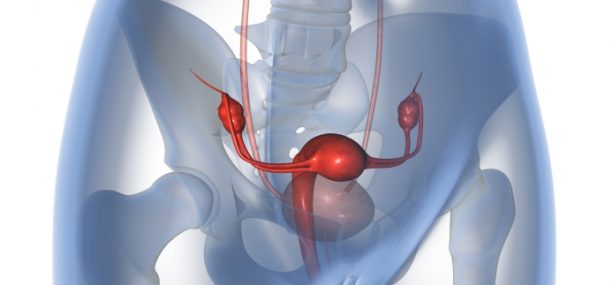Dysfunctional Uterine Bleeding in Adolescents
What is the meaning of dysfunctional uterine bleeding in adolescents?
Dysfunctional uterine bleeding in adolescents is the most common cause of abnormal uterine bleeding in adolescents with endometriosis or polycystic ovary syndrome (PCOS). In most cases, Dysfunctional uterine bleeding in adolescents is not associated with inflammation, pregnancy or neoplasms.
It occurs most commonly at the start of reproductive life and affects girls between 9 and 16 years. It may occur in anovulatory girls as a result of endometrial proliferation under estrogenic stimulation, especially in girls using unopposed estrogen or in adolescents with normogonadotropic anovulation. Long-term exposure to unopposed estrogen results in continuous endometrial proliferation, hyperplasia (endometrial thickness), and neoplasia, as it promotes proliferation and overgrowth of the endometrial lining. Abnormally thickened endometrium is then sloughed off during the process of menstruation, resulting in irregular, heavy and unpredictable bleeding and clotting. In anovulatory girls, abnormal bleeding generally occurs in ovulatory cycles due to luteal phase abnormalities.
Symptoms
What are the symptoms of dysfunctional uterine bleeding in adolescents?
Signs and symptoms of dysfunctional uterine bleeding in adolescents include:
- Irregular menses (period cycles that are shorter than 21 days or longer than 35), big intervals between successive periods, and late periods manifested by absence of menstruation for more than 35 days
- Pale skin, weakness, and symptoms of anemia
- Bad appetite
- Uterine bleeding, or light vaginal bleeding (spotting)
Causes
What are the causes of dysfunctional uterine bleeding in adolescents?
Anovulation is the most common cause of dysfunctional uterine bleeding in adolescents. Up to 80% of cycles are anovulatory especially in the first 2 years after menarche. In most cases, menarche typically occurs within 2–4 years after breast budding (breast development or thelarche). However, hormone imbalance is the main cause of abnormal uterine bleeding in adolescents.
Other causes of DUB in adolescents include follicular atresia, impaired function of the HPG axis, polyps (endometrial or cervical), polycystic ovary syndrome (PCOS), endometrial proliferation, bleeding disorders, or adenomyosis. Rarely, thyroid problems (hypothyroidism or hyperthyroidism), cervical infections, pituitary disorders, or ovarian tumors can cause abnormal uterine bleeding.
Treatment
How to treat dysfunctional uterine bleeding in adolescents?
Classical treatment
High-dose estrogen therapy is used to control heavy bleeding episodes
Combined oral contraceptives (COCs), such as the monophasic COCs that contain 30 micrograms ethinylestradiol and 75 micrograms gestodene are often used to treat abnormal uterine bleeding in adolescents. Alternatively, Combination birth control pills, such as ethinyl estradiol 20-35 μg is the mainstay of treatment for up to 18 years of age
Antianemia Drugs are drugs used for treatment of Anemia, such as Ferrous Sulfate or Iron Dextran (INFeD ®), Folic acid, and Vitamin B12. Alternatively, Epoetin alpha (erythropoietin, Epo, Epogen, Procrit ®) can be used to stimulate red blood cell production
Volume replacement therapy is recommended for patients with hypovolemia, this therapy aims to replace intravascular fluid losses. Infusion solutions, such as saline, lactated Ringer’s solution or 0.9% sodium chloride solution (NaCl 0.9%) are often used to maintain sufficient tissue perfusion. Alternatively, a blood transfusion is often used to quickly restore blood volume
Next steps management
How to diagnose dysfunctional uterine bleeding in adolescents?
Gynecologic history and physical examination, your doctor will review your history of symptoms or menstrual periods and will conduct a pelvic exam
A progesterone test to find out whether you are ovulating regularly, low progesterone levels during the third week of a menstrual cycle suggest an ovulation problem. Alternatively, you can learn to chart your basal body temperature (97 °F or 36 °C) to find out when you’re ovulating, As you chart your BBT each morning throughout your cycle, you will notice that your chart will become biphasic with a temperature shift of approximately 4 °F, it will show relatively low temperatures before ovulation and slightly elevated temperatures that occur just after ovulation due to progesterone. Basal body temperature can be measured using a basal thermometer, take your temperature orally first thing in the morning right after you wake up, and before jumping out of bed. Make sure to take your basal body temperature at the same time everyday
Blood tests, such as a hCG pregnancy test, CBC and serum ferritin to check for anemia, serum prolactin test to check for a pituitary gland problem, TSH test to check for a thyroid gland problem
Pap smear and cultures to detect premalignant lesions
Urinalysis and culture test to screen for infections, such as chlamydia and gonorrhea
Transvaginal pelvic ultrasound is an ultrasound procedure often performed after the pelvic exam to check for pelvic abnormalities
Saline sonohysterogram is an ultrasound procedure used to look for uterine polyps or fibroids
Endometrial biopsy, to find out whether endometrial hyperplasia or endometrial cancer is present
Verified by: Dr.Diab (November 28, 2017)
Citation: Dr.Diab. (November 28, 2017). Dysfunctional Uterine Bleeding in Adolescents. Medcoi Journal of Medicine, 26(2). urn:medcoi:article15520.














There are no comments yet
Or use one of these social networks